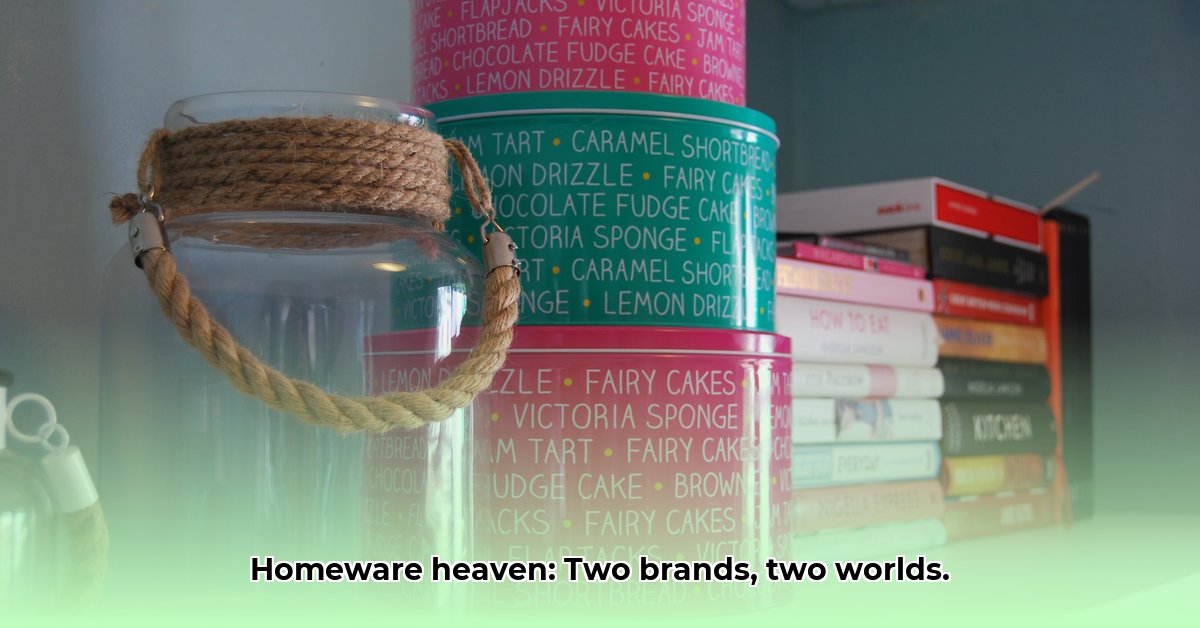
The UK luxury homeware market is experiencing a surge in popularity, with discerning consumers seeking unique and stylish pieces for their homes. Two brands, FabFunky and Fable, have carved distinct niches within this competitive landscape, showcasing contrasting approaches to design, production, and marketing. This comparative analysis explores their strategies, highlighting key differences and identifying actionable insights for future growth.
FabFunky: Artistic Whimsy and Limited Editions
FabFunky, spearheaded by Kelly Stevens-McLaughlan, presents a curated collection of limited-edition homeware. The brand's identity centers around quirky, artist-designed pieces, often featuring a distinct dog-centric theme. Each item is meticulously handcrafted, emphasizing exclusivity and collectibility. This approach positions FabFunky as a purveyor of unique, conversation-starting pieces. The limited production runs, however, present a challenge in terms of scalability and consistent revenue generation. Their marketing strategy relies heavily on direct-to-consumer sales, capitalizing on the brand's artistic identity and cultivating a loyal customer base. Is this niche approach sustainable for long-term growth? Only time and consistent market analysis will tell.
Fable: Ethical Elegance and Sustainable Style
In stark contrast to FabFunky's handcrafted ethos, Fable champions ethically sourced materials and sustainable manufacturing practices. Their collection features timeless, sophisticated designs inspired by vintage styles, emphasizing transparency and environmental responsibility throughout their supply chain. This commitment resonates deeply with environmentally conscious consumers seeking high-quality, ethically produced homeware. While Fable's approach to mass production might offer greater scalability compared to FabFunky's handmade model, maintaining ethical standards while scaling presents its own set of complexities. Their marketing strategy emphasizes storytelling, highlighting the provenance of their materials and the meticulous production processes. Instead of limited editions, Fable focuses on a consistent collection, aiming for a steady stream of products to satisfy customer demand.
FabFunky vs. Fable: A Comparative Analysis
A direct comparison of FabFunky and Fable reveals striking differences in their approaches:
| Feature | FabFunky | Fable |
|---|---|---|
| Brand Identity | Playful, artistic, limited-edition, dog-centric | Sophisticated, sustainable, ethically sourced, vintage-inspired |
| Product Offering | Unique, hand-crafted, limited-edition prints | Ongoing collection of ethically sourced tableware |
| Production Method | Handmade, small-scale production | Ethically sourced materials, larger-scale production |
| Marketing Strategy | Focus on artistic identity, direct-to-consumer sales | Transparency, sustainability messaging, storytelling approach |
| Target Audience | Collectors, art lovers, dog enthusiasts | Environmentally conscious consumers, lovers of classic styles |
FabFunky's appeal lies in its exclusivity and artistic merit; Fable's strength is its commitment to ethical production and consistent availability. Both brands cater to specific customer segments, highlighting the diverse needs within the luxury homeware market.
Navigating the UK Luxury Homeware Market: Challenges and Opportunities
The UK luxury homeware market is highly competitive. Both brands face unique challenges. FabFunky's limited production model restricts scalability, requiring continuous innovation in design and marketing to maintain customer engagement. Fable must balance its commitment to ethical sourcing with the need for efficient, scalable production to meet growing demand. Both brands should explore digital marketing strategies to enhance their online presence and reach broader customer bases. The market favors businesses that can adapt to evolving consumer preferences and respond agilely to market trends.
Strategies for Future Growth: Actionable Insights
FabFunky:
- Diversify Designs: Explore new design themes while maintaining the brand's artistic essence (e.g., expanding beyond dog-themed designs).
- Enhance Online Visibility: Invest in SEO and targeted advertising to increase brand awareness and reach new customers.
- Strategic Partnerships: Consider collaborations with larger retailers or interior designers to expand distribution and reach a wider audience.
Fable:
- Reinforce Transparency: Provide detailed information on their website regarding their supply chains and ethical practices. Partner with reputable organizations to verify these claims.
- Influencer Marketing: Leverage collaborations with relevant influencers and interior designers to increase brand visibility and reach new customers.
- Expand Product Lines: Explore complementary products, such as linens or textiles, maintaining the brand's commitment to ethical and sustainable production.
Conclusion: Two Sides of the Same Coin
FabFunky and Fable represent two distinct, yet equally successful, approaches within the UK luxury homeware market. FabFunky's artistry and exclusivity appeal to a niche audience, while Fable's ethical production and broader appeal cater to a larger customer base. Their contrasting strategies highlight the importance of understanding target audiences and adapting to market demands. Ultimately, success in this sector rests upon identifying a clear brand identity and effectively communicating its values to the right customers. Further research into consumer trends and specific market segments will be crucial for both brands' long-term prosperity.